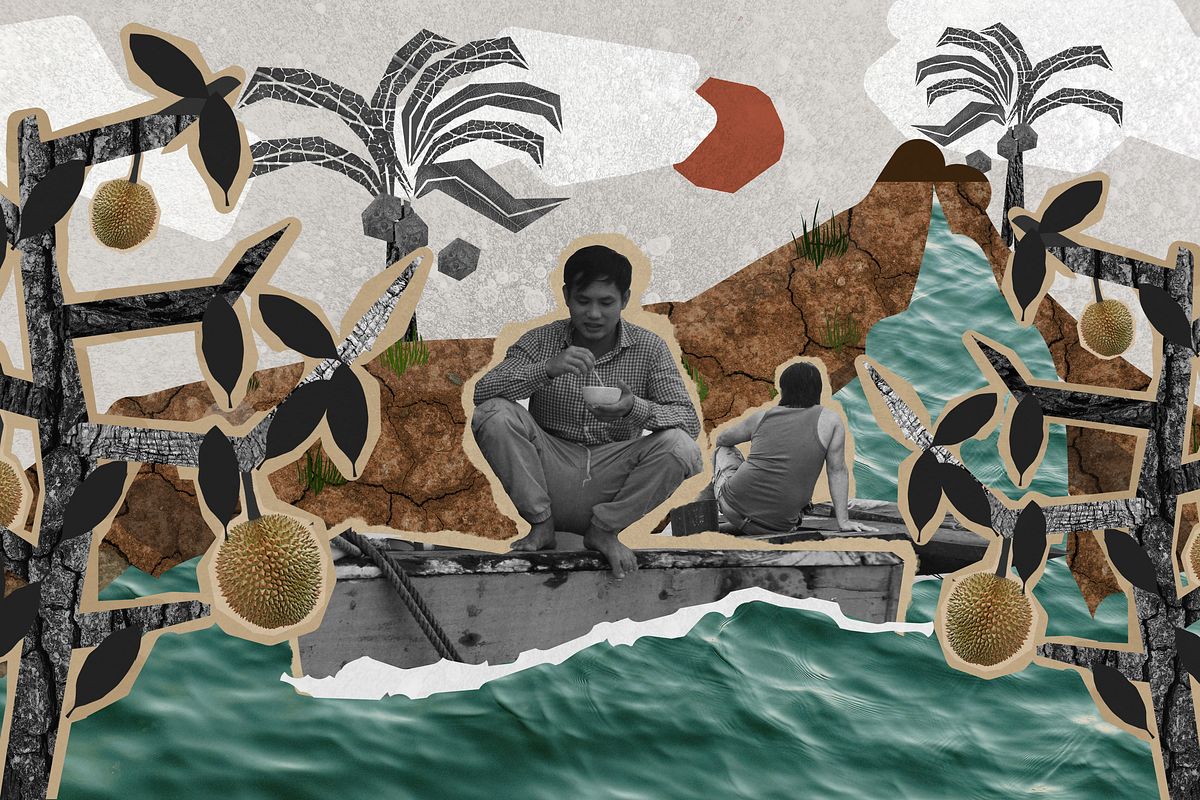Nguyễn Văn Quại, 63, walked slowly on the muddy dirt path in his yard, his hands clasped behind his back. He stopped beside a tree split in half, its branches dipping into the stagnant water of a narrow moat, and gestured towards the rest of his leafless crop — their trunks yellow, their bark cracked and brittle.
This story was supported by the Pulitzer Center.

Nguyễn Văn Quại points to his durian trees in Ngũ Hiệp.
For decades, Quại has called Ngũ Hiệp home. The small island on the Mekong River in Tiền Giang Province is less than two hours inland from the sea. His family first farmed rice but turned to durian, a more lucrative crop, in the early 1990s. Now, more than 200 trees stand in his yard, their thorny fruit bringing in hundreds of millions of VND.
But like many farmers in the Mekong Delta, Quại is watching his land turn against him. Last year, drought pushed saltwater deep into the delta’s freshwater reserves, seeping into fields that had sustained generations. Thousands of hectares of crops withered, leaving farmers scrambling to salvage what they could.
Like Quại, many farmers in the region are struggling under the combined weight of drought, rising sea levels, and coastal erosion. Under the pressures of climate change and industrial exploitation, briny water from the sea is pushing further and further inland.
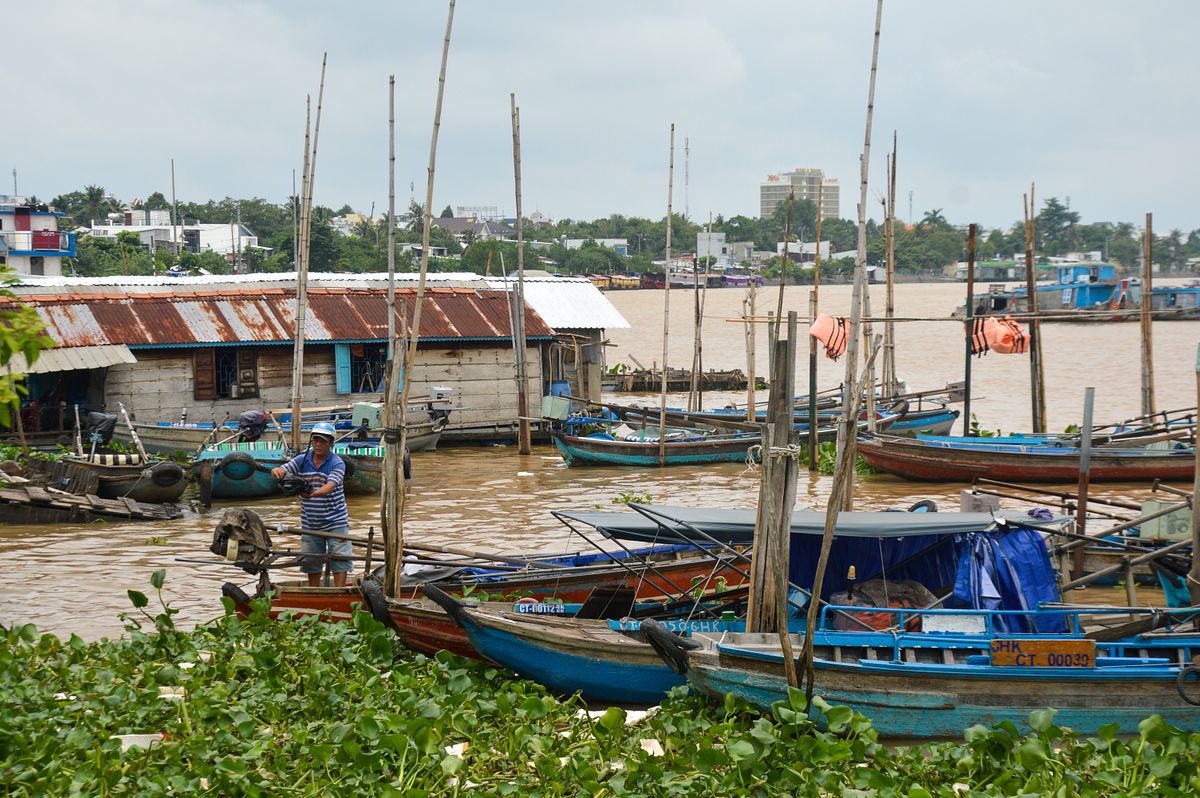
Lifestyles and livelihoods in the Mekong Delta are reliant on the region's waterways. Photo: On the river in Cần Thơ.
According to the Mekong River Commission, approximately 65 million people in the Lower Mekong rely on agriculture as their central livelihood. However, salt intrusion is only getting worse. Researchers at Netherlands Utrecht University and the Deltares research institute have found that saltwater intrusion has been increasing over the last twenty years and by 2050, as much as 100,000–800,000 hectares of land in the Mekong Delta could be affected by worrying levels of salt intrusion.
Climate change and human drivers, such as upstream damming and sand mining, are two of the greatest factors driving the salt intrusion crisis, said Sepehr Eslami, lead researcher on the study. The effects are being felt heavily downstream.

Boats bridge the gap between the banks of the Cần Thơ River in late July 2024. Local travel in the region often requires boats.
“This year was one of the worst in the past few years,” Quại said of the drought that killed off about 30 of his durian trees, including all of his newly grown durian saplings in late April last year. “People didn’t even have enough water to use, let alone plants.”
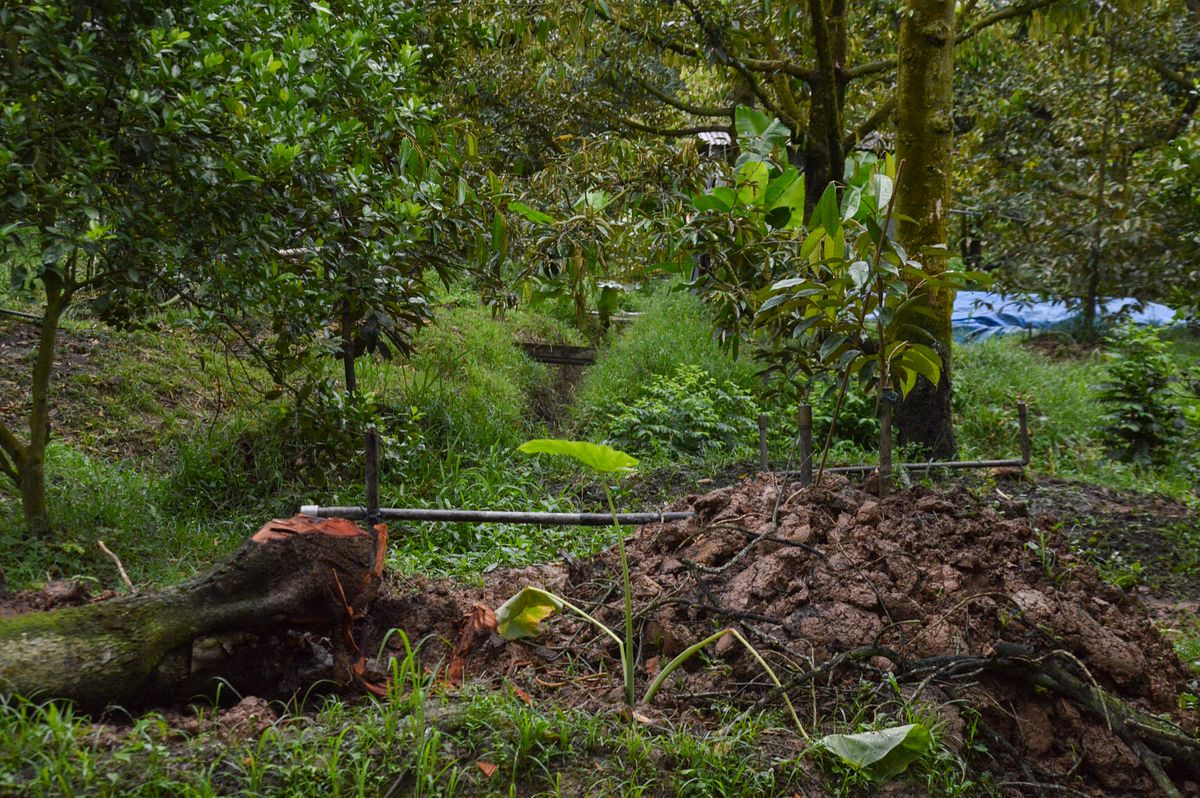
A fallen durian tree lies on its side in Nguyễn Văn Quại’s durian farm on July 27, 2024.
Quại said it costs about VND100,000 to buy a durian tree sapling. This expense does not include the cost of fertilizers and pesticides, labor and the constant upkeep needed to protect them from pests and other stressors. His family lost about VND30 million as drought and saltwater intrusion devastated their crops.

Durian saplings for sale at Trần Thị Kim Thơ’s nursery.
Durian, however, is not the only crop that reacts poorly to elevated levels of salt. Rice plants, for example, produce fewer and lighter grains when exposed to too much salt. Their leaves also curl and turn yellow, and many of their flowers fail to turn into seeds, meaning a smaller harvest. It also impacts another popular crop known to be moderately salt tolerant: coconut trees. When exposed to prolonged or excessive salt stress, they experience stunted growth, reduced yields and potential death.
For durians, it often starts with leaf tips and edges drying out, turning yellow and eventually dropping, Quại said. As the stress on the trees worsens, they produce fewer flowers, and young fruits drop before they have a chance to ripen.
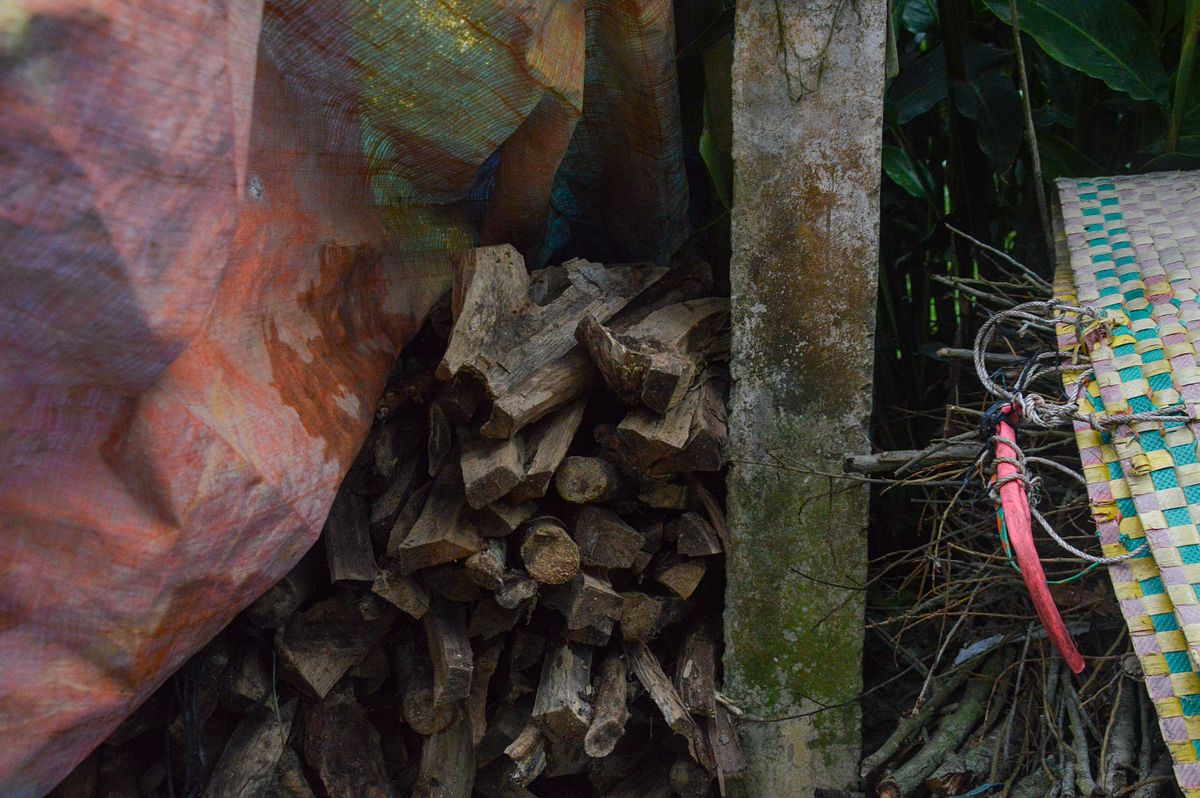
A stack of dead durian trees, chopped up for firewood, is piled in Nguyễn Văn Quại’s yard after the 2024 growing season.
Normally, a durian tree takes four to five years to bear fruit and can thrive year-round — provided there is a stable water source. But as droughts and salt intrusion continue, keeping the trees alive has become an uphill battle. The worsening conditions forced Quại’s youngest daughter to leave Ngũ Hiệp, relocating to Đắk Lắk with her husband and friends in search of more stable land to grow durian. But even in the Central Highlands, she found no refuge — droughts there, too, were taking their toll.
Many of Quại’s durian trees were affected by other issues exacerbated by elevated salt levels, he said, like fungi and pests. For him, 2024 was the worst year yet. But 2025 is delivering its own challenges, as experts warn salt intrusion could be particularly high over the next two months. Provinces on the west coast like Cà Mau will have the highest salinity readings in April and May this year, said Nguyễn Thị Hồng Điệp, Advanced Senior Lecturer at Cần Thơ University’s College of Environment and Natural Resources, noting that industrial exploitation and climate change are key driving factors.
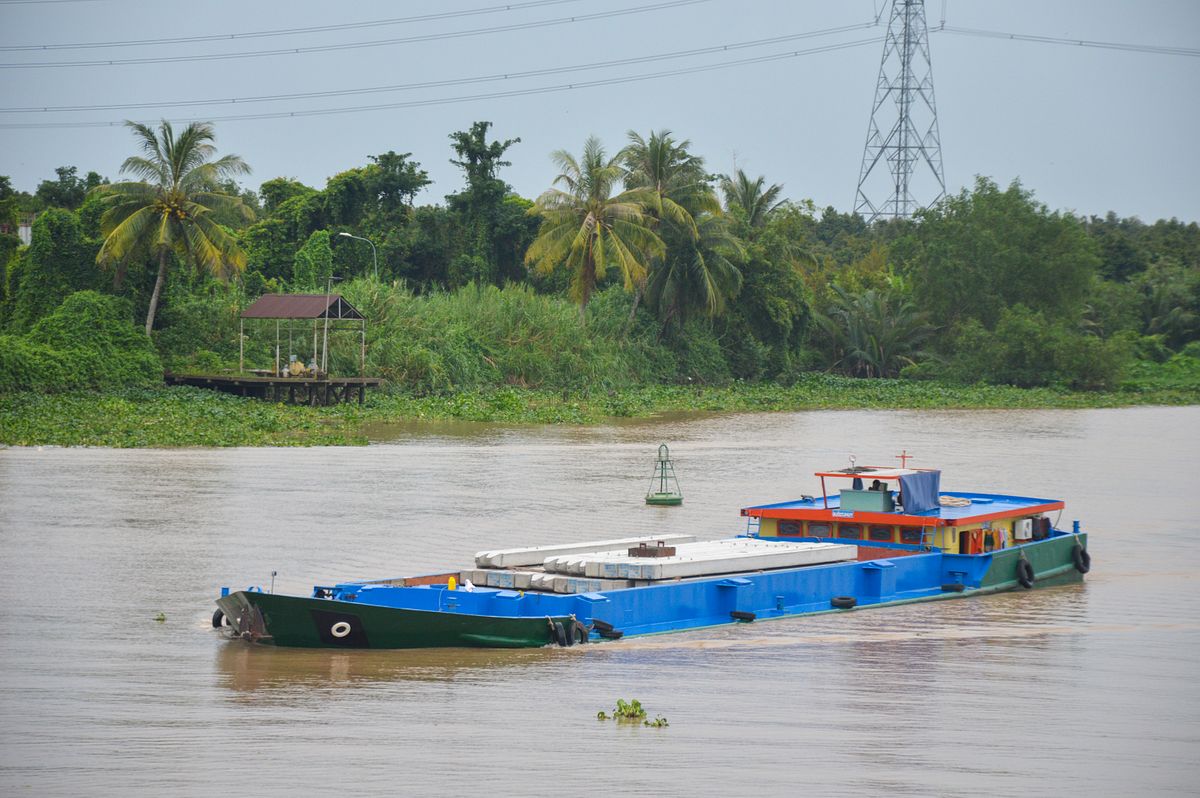
Coconut trees along the Mekong River show yellowing leaves in July 2024.
“The best course of action is to live with nature”
High temperatures, droughts, water shortages and saltwater intrusion affect many regions in Vietnam, including the Mekong Delta. In 2024, a directive from Prime Minister Phạm Minh Chính called for a series of urgent measures to safeguard water resources, protect agricultural production, and ensure stable living conditions for millions at risk. The directive laid out several strategies, including monitoring weather patterns, devising emergency response plans, and urging farmers to adopt water-efficient practices. Investing in water infrastructure projects was also identified as a priority, among others. Local authorities have also been tasked with dredging key irrigation channels to boost storage capacity and deploying tanker trucks if necessary to ensure uninterrupted access.
Planting salt-tolerant species and changing farming models can also help protect the region in the long term, Điệp said, while strategies like rainwater collection, water recycling, and changing crops may be the best course of action for local farmers.

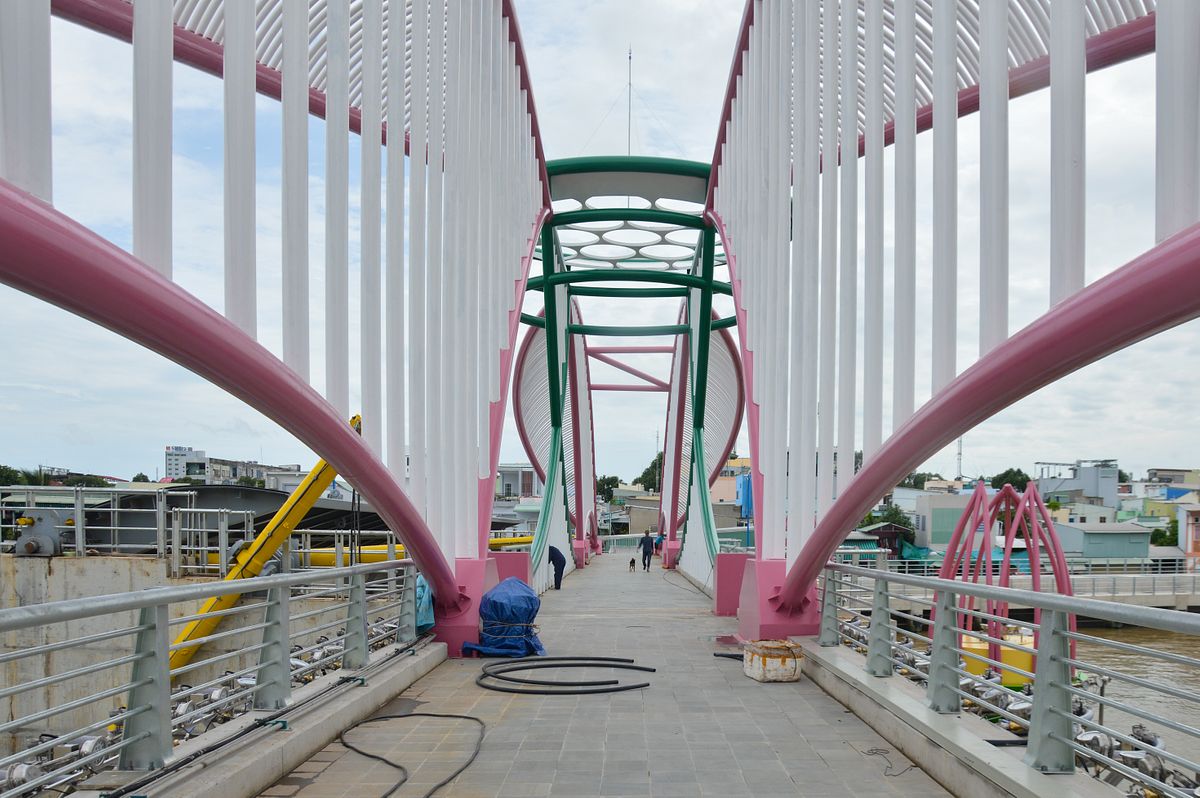
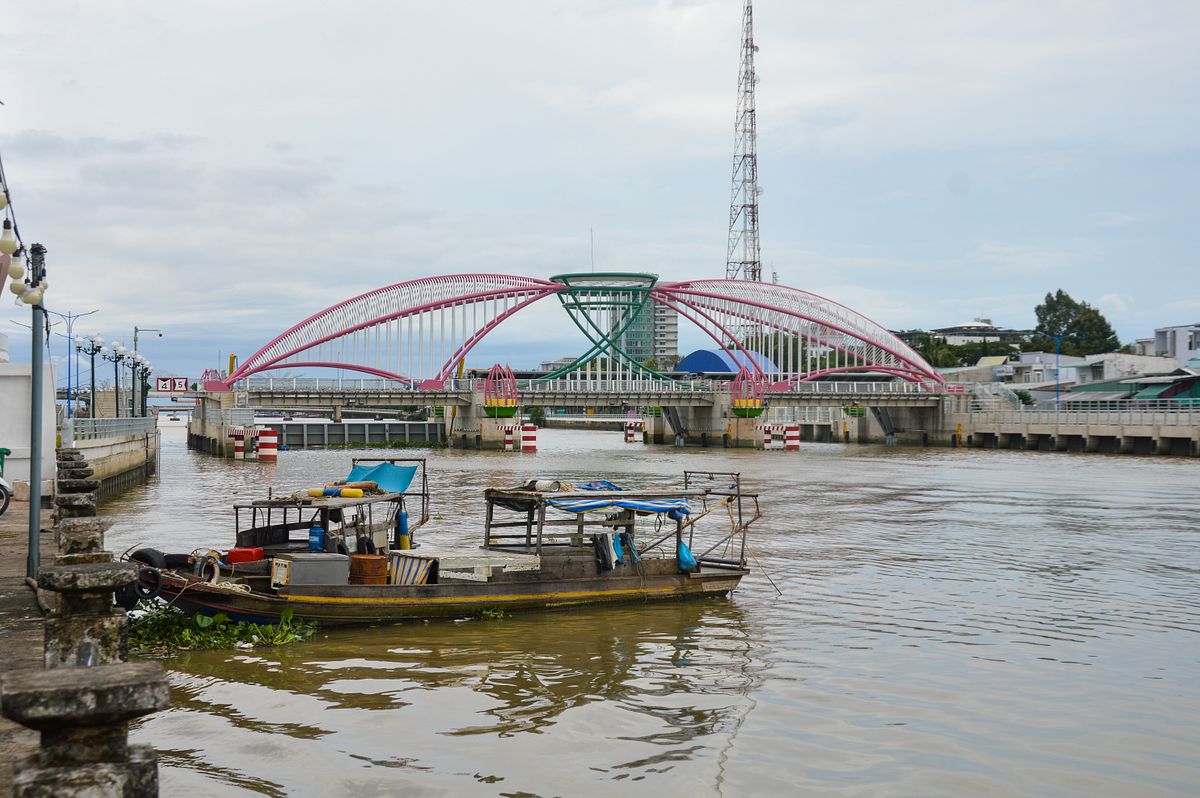
Construction of a sluice gate at Cái Khế Canal in Cần Thơ City, preparing to open at the end of Summer 2024. Sluice gates are used to reduce flooding and prevent salt intrusion.
Though climate change has played a significant role in the region’s issues with salt intrusion, industrial developments like upstream damming also continue to put stress on river levels by disrupting fresh water supply downstream and depleting the region’s sediment. According to the Mekong Dam Monitor, a project of global think tank the Stimson Center, there are approximately 60 upstream dams across China, Thailand, Laos and Cambodia that significantly disrupt the flow of freshwater downstream to agricultural lands in Vietnam.
Much of the issue of salt intrusion comes down to protecting the sediment supply, said Esmali, which is essential for preventing the erosion of the South Vietnam coast. As salt intrusion becomes more extreme, farmers may face difficult choices.
“They will either have to change crops, or they will have fresh water supply challenges, or they have to switch jobs and migrate from the region,” said Esmali. “There is a range of adaptation options and none of them are easy.” As conditions become more extreme, freshwater zones like Cần Thơ and Tiền Giang provinces that are protected by sluice gates will begin to experience some of these challenges as well, and conditions in areas that are already affected will get worse.
But adapting and adjusting at a local level will be essential. “The best course of action is to live with nature and to adapt,” said Võ Thành Danh, Professor of Economics at Cần Thơ University, who has helped to assess the viability of coastal adaptation strategies in the delta. Turning environmental stress into opportunities to change crops may be one way to adapt.
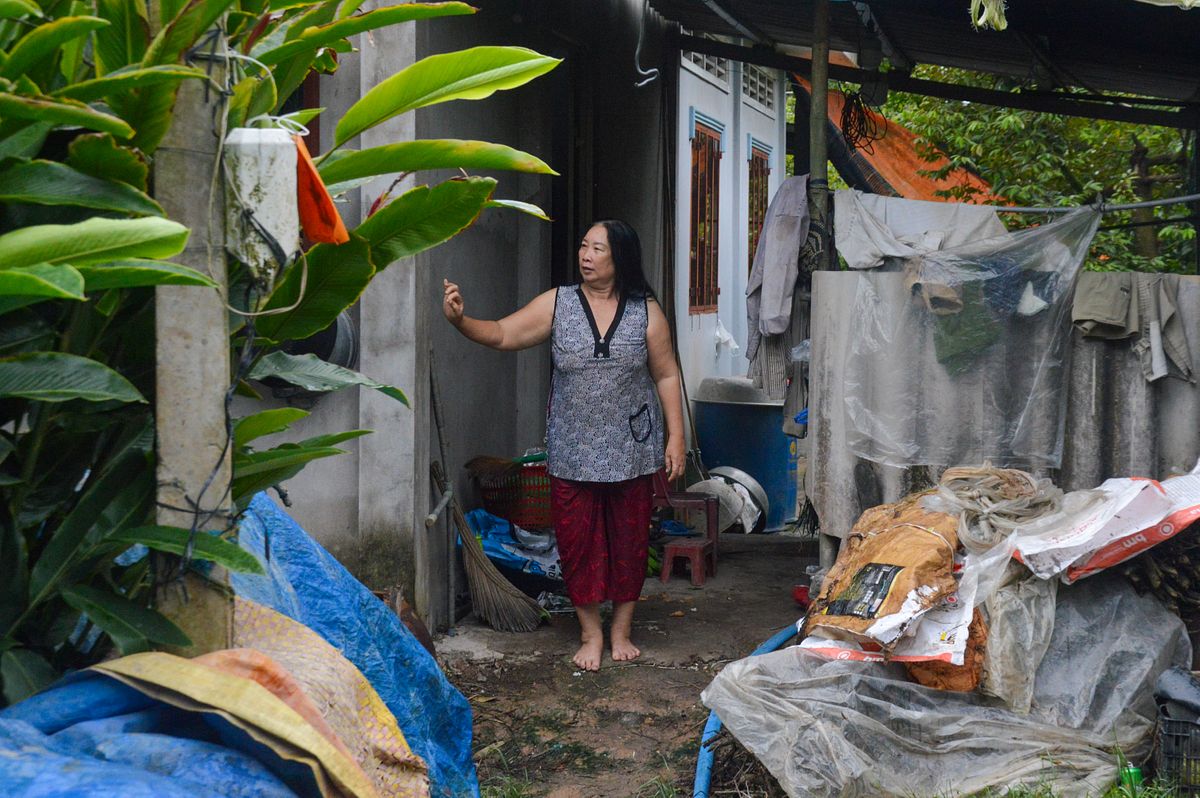
Lê Thị Bé Hai and her family lost around VND30 million in income after salt intrusion killed several of their durian trees.
Delta residents like Trần Thị Kim Thơ are doing exactly that, as her family was forced to cut their losses as saltwater intrusion wiped out all 100 of their durian trees. Also natives of Ngũ Hiệp, Thơ’s family have grown durians for nearly 30 years. But with the land no longer reliable for full-grown trees, they pivoted to selling ornamental plants and saplings — among them, more than a thousand young durian trees.
“People only buy them when their durian trees die — the more plants that die, the more they buy,” Thơ said about the saplings. Though her family doesn’t make as much as they did before and their income is unstable, she said, it’s a much safer investment. The saplings and ornamental trees require less water than durian trees, making them less vulnerable to droughts and saltwater intrusion, she explained.
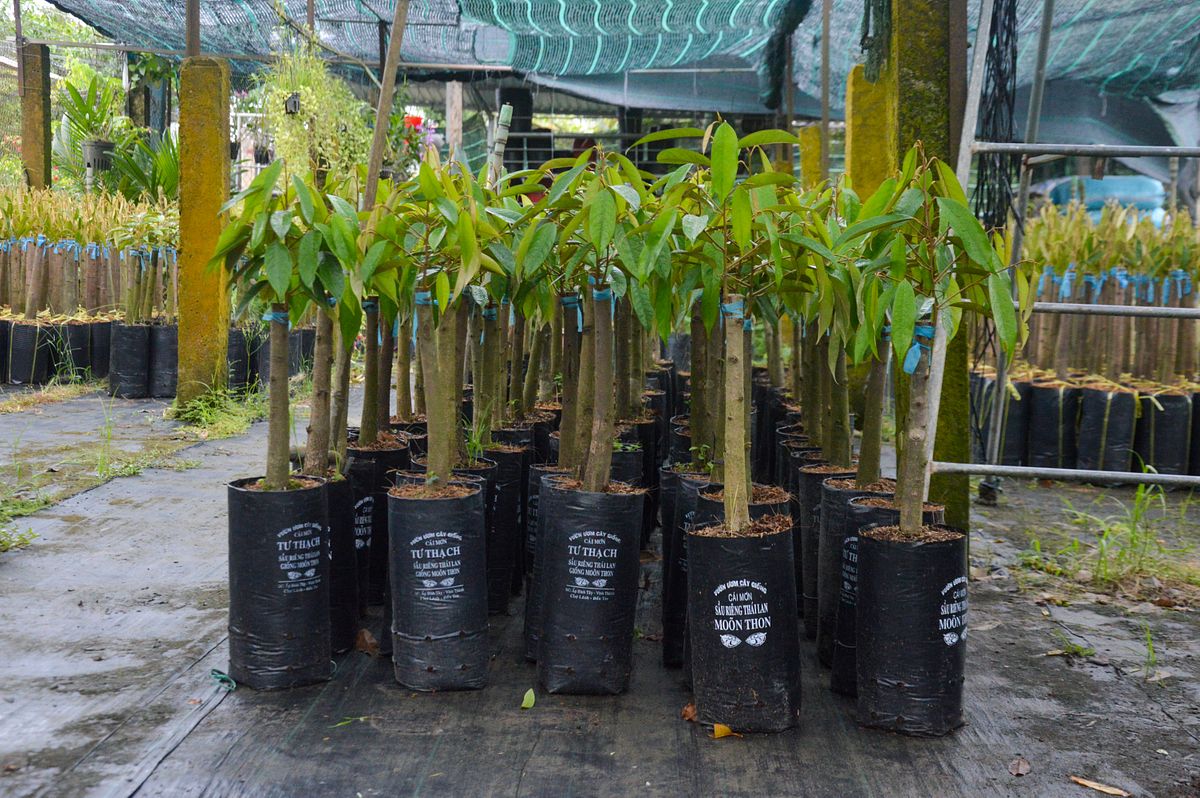
Trần Thị Kim Thơ’s family switched to selling durian saplings after losing nearly 100 durian trees due to salt intrusion.
But Thơ and her family are among the few in Ngũ Hiệp who have stepped away from this prized crop out of caution. With its high economic value, durian continues to attract many others in the region. Despite the mounting challenges, they remain determined to grow it, holding onto the hope that the rewards will ultimately outweigh the risks, she said.
Quại and his wife, 62-year-old Lê Thị Bé Hai, are among those willing to take the risks. As they pulled back the tarp covering the chopped-up remains of the trees that didn’t survive, they said it wasn’t their first time doing this. “If a tree dies, we chop it down and grow a new one,” Hai said. “We’re not giving up.”
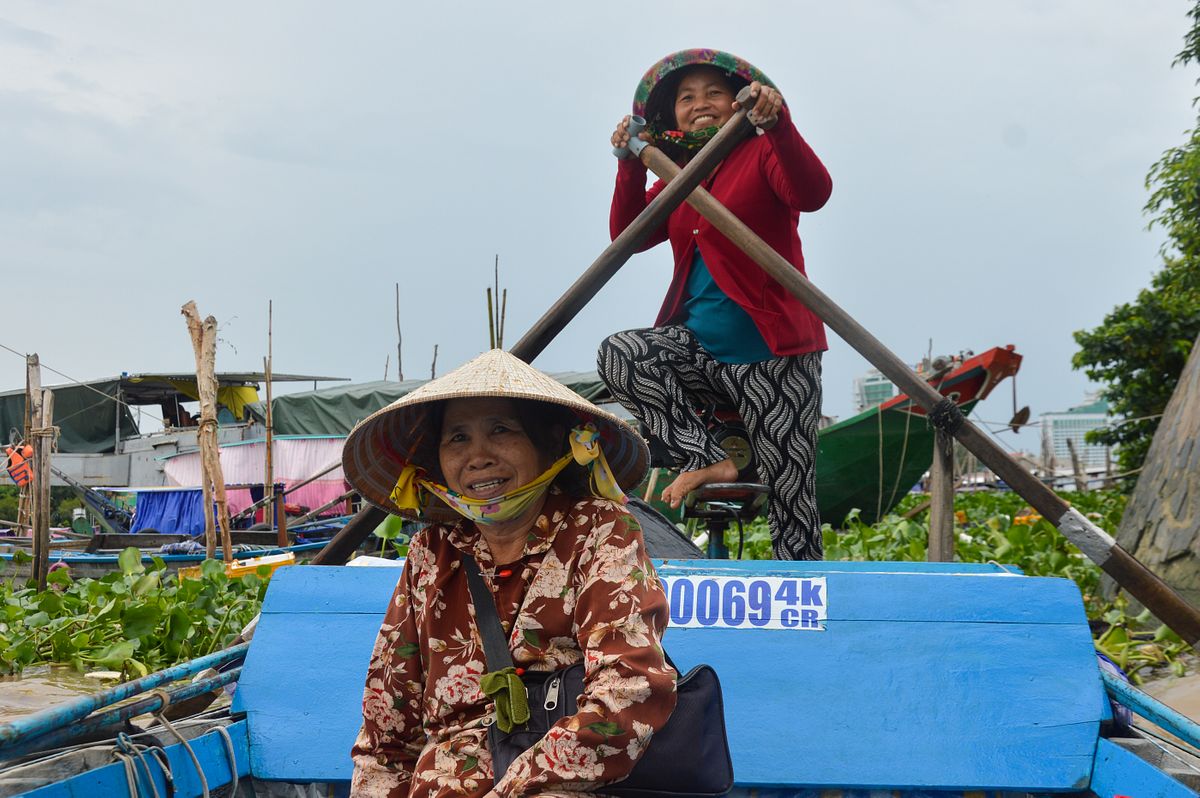
Locals cross the Cần Thơ River. As saltwater conditions become more extreme, freshwater zones like Cần Thơ may have to contend with a more difficult future.
This story was supported by the Pulitzer Center.

